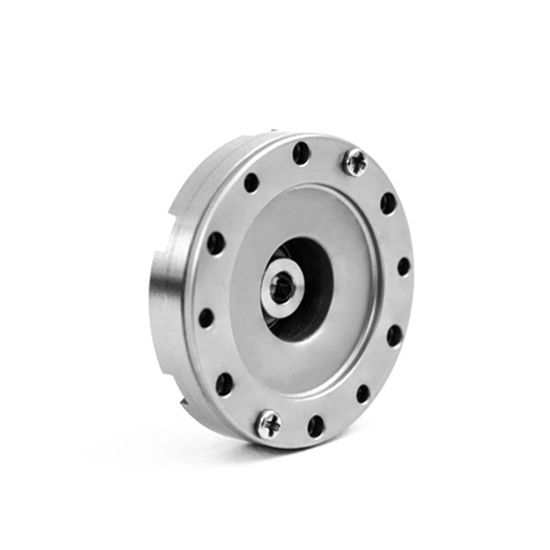
- Stock: In Stock
- Model: RDDLZ-HD-25
- Weight: 1.00
- SKU: RDDLZ-HD-25
Available Options
Get a 25mm harmonic drive at low price. It is available with gear ratios of 30 and 50. Harmonic gearing provides high transmission accuracy and supports a single-stage high reduction ratio with low inertia. Cost-effective strain wave gear is the best solution for industrial robots.
Features
- The lightweight strain wave harmonic drive gearbox has an ultra-thin hollow, compact and simple structure.
- Excellent positioning accuracy and rotation accuracy.
- Harmonic gearing with a high torque capacity and a high gear ratio is available.
- Special for wrist joint robot.
Specifications
- Model: RDDLZ-SHD-03
- Diameter: 25 mm
- Thickness: 7.3 mm
- Gear type: Cylindrical gear reducer
- Installation form: Horizontal
- Input speed: 4000 rpm
- Rated power: 0.1 kW
- Output speed: 0~500 rpm
- Available torque: 1~100 N.m
- Number of stages: Single-stage
- Gear ratio: 30, 50, other gear ratios please contact us.
Parameters
| Gear ratio | 30 | 50 |
| Rated torque when input 2000r/min (N.m) | 0.08 | 0.13 |
| Allowable peak torque at start and stop (N.m) | 0.15 | 0.24 |
| Maximum allowable average load torque (N.m) | 0.12 | 0.16 |
| Momentary allowable maximum torque (N.m) | 0.25 | 0.6 |
| Allowable maximum input speed (r/min) | 10000 | |
| Allowable average input speed (r/min) | 6500 | |
| Moment of inertia (1/4GD) (kgcm2) | 7.0x10-4 | |
| Arc seconds | ≤20 | |
| Design life (hour) | 10000 | |
25mm strain wave harmonic drive gearbox dimensions (unit: mm)
Strain wave harmonic drive gearbox applications
Tips: Strain wave harmonic drive gearbox working principle
Harmonic gear transmission was invented by the American inventor CWMusser in 1955. The harmonic drive is a new type of transmission method that uses the elastic deformation of flexible working members to move or transmit power. It breaks through the use of rigid components in mechanical transmission. The mechanism mode uses a flexible component to achieve mechanical transmission, thereby obtaining a series of special functions that are difficult to achieve by other transmissions. Because the deformation process of the intermediate flexible component is basically a symmetrical harmonic, it is named. Except that the former Soviet Union called this kind of transmission flexible wheel transmission, the United States, Britain, Germany, Japan and other countries all called it "harmonic transmission".
